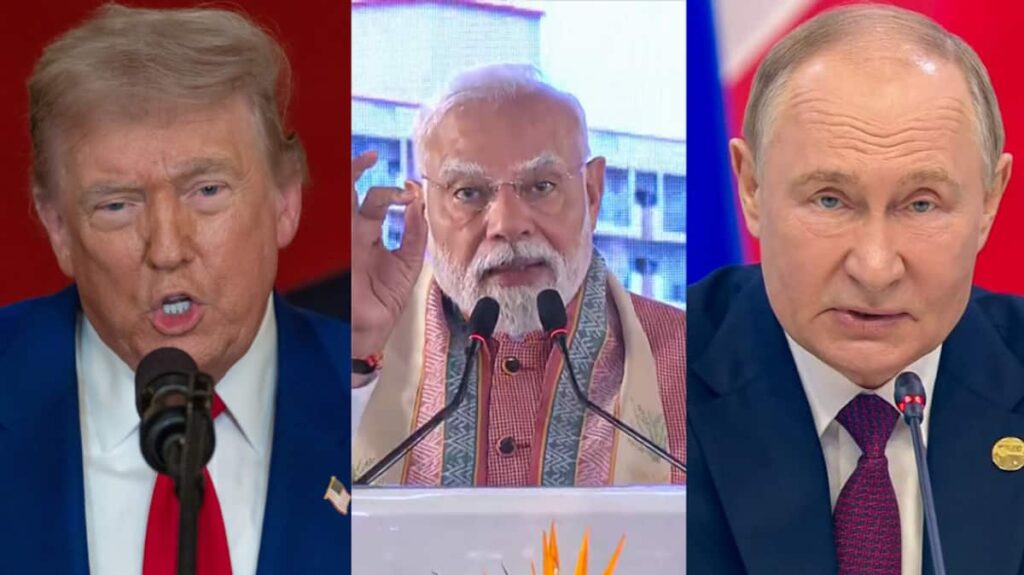
President Donald Trump has described his administration’s newly imposed tariffs on India as a “big blow” to Moscow, framing the move as part of a broader effort to undermine Russia’s wartime economy.
Speaking to reporters at the White House on Monday, Trump said the 50% tariff — comprised of an existing 25% duty on Indian imports and an additional 25% penalty tied to purchases of Russian crude — was deliberately aimed at hitting Russia through one of its largest oil customers.
“They have tremendous potential,” Trump said of Russia’s economy. “But they’re not doing well because it’s been very well disturbed by this. It doesn’t help when the President of the United States tells their largest or second-largest oil buyer, ‘We’re putting a 50% tariff on you if you buy oil from Russia.’ That was a big blow.”
India has been among the leading importers of discounted Russian crude since the outbreak of the Ukraine war in 2022, a position it has defended as a matter of economic necessity. Indian officials have sharply criticized the U.S. measures, calling them “unjustified and unreasonable,” and warning of consequences for global energy markets. They insist their oil procurement is driven by market prices rather than political alliances.
The tariffs, announced last week, mark one of the most aggressive trade actions of Trump’s second term and come just days before his planned summit with Russian President Vladimir Putin in Alaska. The meeting is expected to focus heavily on a possible cease-fire in Ukraine, with the White House signaling that economic pressure — including restrictions on oil revenue — will be central to its approach.
India’s resistance to the U.S. policy underscores the geopolitical complexity of the sanctions strategy. Former Reserve Bank of India governor Raghuram Rajan has cautioned that halting Russian oil purchases could create a “bigger issue” for India’s economy, given its heavy reliance on imported energy.
Global markets reacted with guarded skepticism. Analysts noted that India currently imports roughly 1.8 million barrels per day of Russian crude, accounting for about 37% of its total oil supply. While cutting that supply could theoretically tighten global oil markets, traders doubt the tariffs alone will significantly alter India’s buying habits in the short term.
Despite the heightened rhetoric, Russia’s financial markets have shown surprising resilience. The Moscow Exchange Index rose 1.4% on Monday, extending gains from the previous week and reaching near a three-month high. Investors appeared to be betting that the upcoming Trump–Putin talks might ease tensions, even amid the new U.S. trade measures.
For Trump, the tariff policy serves both as an economic weapon and a political statement, reinforcing his image as a president willing to take hard-line trade measures in pursuit of foreign policy goals. However, it also risks deepening a rift with India, a strategic partner in the Indo-Pacific region.
Whether the tariffs will deliver the economic damage to Russia that Trump anticipates remains uncertain. For now, the decision has set the stage for a tense summit in Alaska and further strained Washington’s relationship with New Delhi — adding new volatility to an already complex geopolitical landscape.



